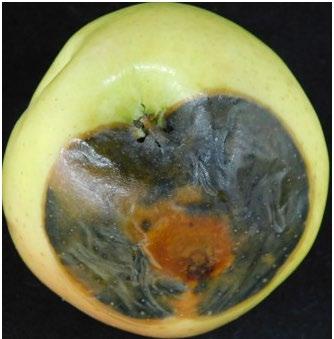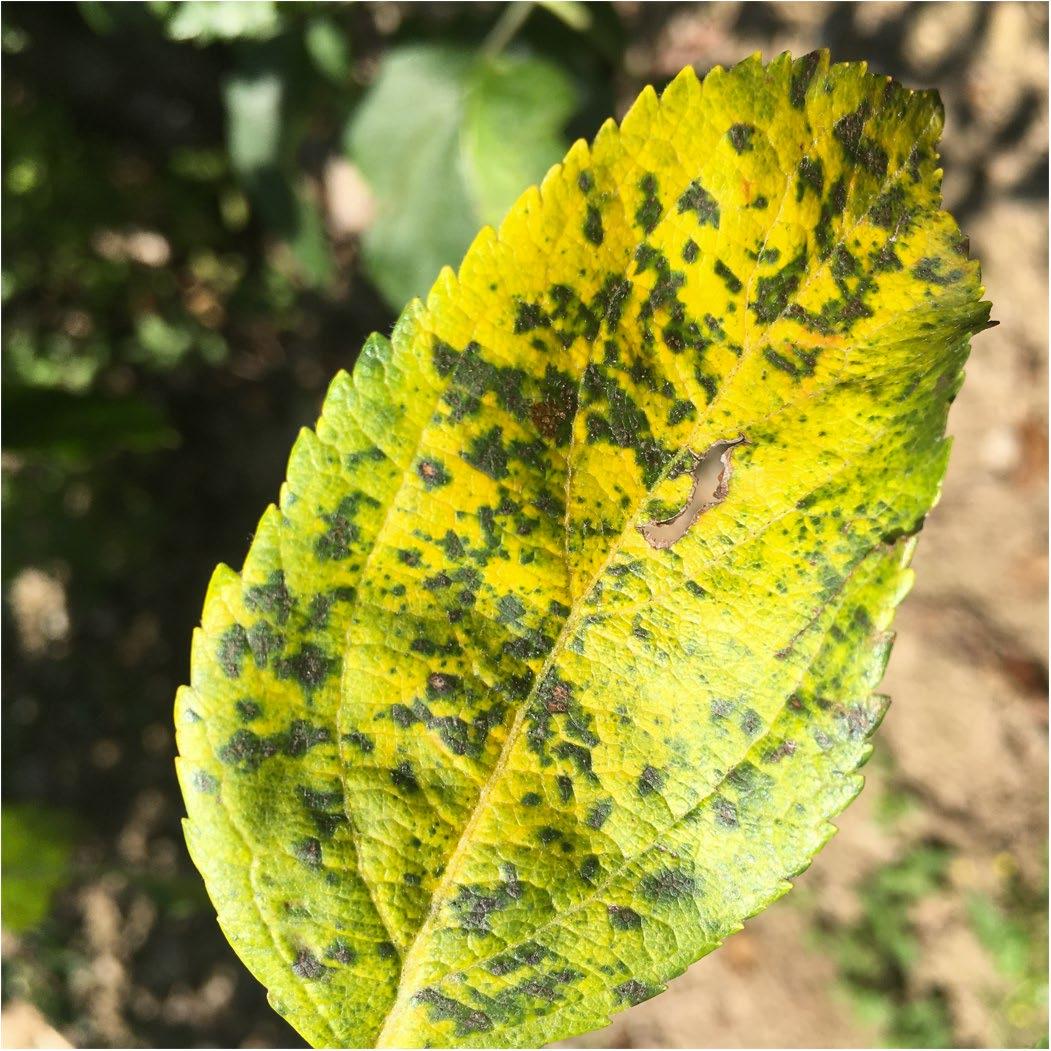Managing Apple Fruit Rots and Other Headaches in the Orchard
The remnants of Hurricane Ida dumped much rain throughout the region. This is a reminder that any fungicides that had been applied need to be reapplied, especially since we are in the harvest season. Fruits are still susceptible to fruit rots and sooty blotch and flyspeck. In addition, Marssonina blotch is another disease that favors wet conditions. Marssonina blotch can defoliate trees quickly and, if pressure is high, potentially cause fruit issues in storage. It is important that growers remain vigilant and keep fruit covered with fungicides during the harvest period. This is especially important for later harvested varieties and varieties intended to be kept in long term storage.
Preventing pre- and postharvest apple fruit rots

Controlling for preharvest apple rots is critical; however, fungal spores are stealthy and can hitch a ride on apples without causing symptoms, giving growers a false sense, picked fruit are clean. It is during storage that those fungi will wreak havoc and cause fruit to decay. Growers need to be thinking about the durability of their final fungicide sprays, especially when large amounts of rain have fallen. It is also important to be thinking about those late season cultivars that may not be harvested until October or early November. For those cultivars, additional fungicide sprays will be needed in late September or even October, depending on our conditions. Another issue growers may encounter due to the high amount of rain is shoulder cracking. Such wounds can be an easy opening for fungal spores to cause fruit rots.
Since bitter rot has been the primary concern the last few years, our research to date has shown conventional fungicides vary in efficacy. Captan is an excellent fungicide for managing bitter rot; however, it can wash off with heavy rain. Our data support Merivon (FRAC Groups 7 + 11; 0 day PHI), Luna Sensation (FRAC Groups 7 + 11; 14 day PHI), and Flint Extra (FRAC Group 11; 14 day PHI) to be the best options as preharvest fungicides that offer residual activity. In addition to bitter rot, these fungicides control most rots, such as white rot, black rot, and Alternaria rot, that growers in the Mid-Atlantic may encounter late in the season or may creep up during postharvest storage.
Some general management techniques to keep in mind to reduce postharvest fruit rots:
- The more mature a fruit, the more susceptible it is to storage diseases. Harvest fruit at proper maturity.
- Bruised or wounded fruit are susceptible to postharvest fruit rots, such as blue mold and gray mold. While harvesting, handle fruit carefully when picking and transferring fruit from bag to bin to avoid bruising or wounding.
- Inoculum sources for rot pathogens causing disease in storage (if already not hitching a ride on the fruit) come from plant and soil debris. Use clean bins and minimize the amount of soil and plant debris brought in on bins.
- Warm temperatures encourage pathogens to grow. Keep fruit cool after harvest, i.e. keep bins in shade.
- If delivering to a packinghouse, minimize time between harvest and delivery of fruit.
Managing Marssonina blotch

Marssonina blotch first appeared in apple growing regions in the Eastern U.S. in 2017. Leaf spots first appear on the upper surface of mature leaves late summer. They are 5-10 mm in diameter, grayish, brown, and tinged purple at the periphery. Small black acervuli (small asexual fungal fruiting body) are often visible on the surface. When lesions are numerous, they coalesce, the surrounding tissue turns yellow, and defoliation results. If infection is severe, the entire tree can lose its leaves in a short period of time. In addition, fruit can become infected, and symptoms may be evident before harvest or during storage. Symptoms appear as small, black sunken lesions. Lesion is firm; more than one lesion may be on the fruit. Products used to manage fruit rots will also manage Marssonina blotch. It is important fungicides are reapplied after rain events.
For commercial fruit growers, please note:
When controlling for disease, weather and tree growth conditions need to be monitored at a local level within one’s own orchard. To assist with management decisions (especially infection events), growers can use the NEWA website, which has weather stations all over Pennsylvania. Before chemical products are applied, be sure to comply by obtaining the current usage regulations and examining the product label. Product information can be easily obtained from CDMS or Agrian.
This article appears on September 9, 2021, Volume 12, Issue 6 of the Vegetable and Fruit News